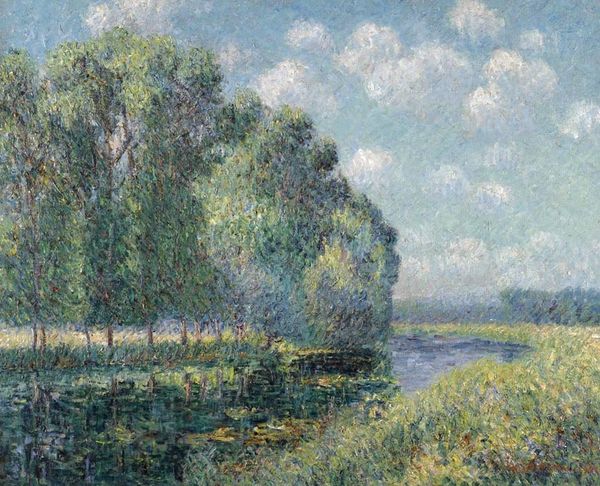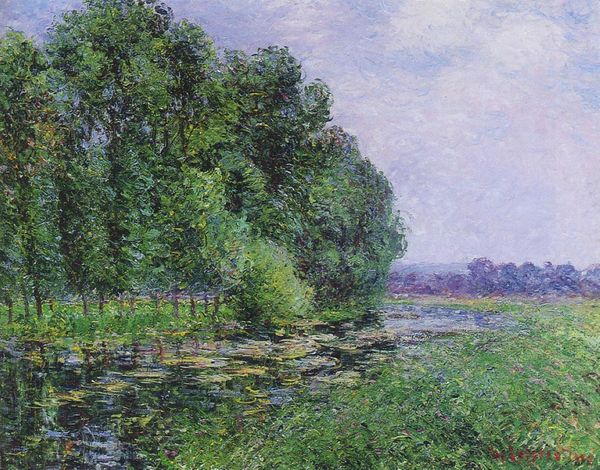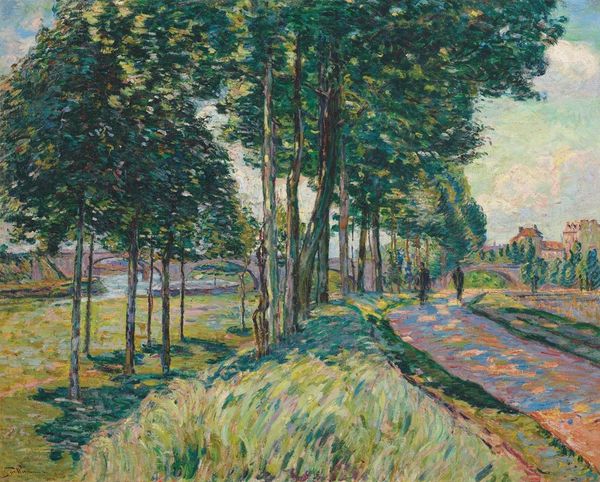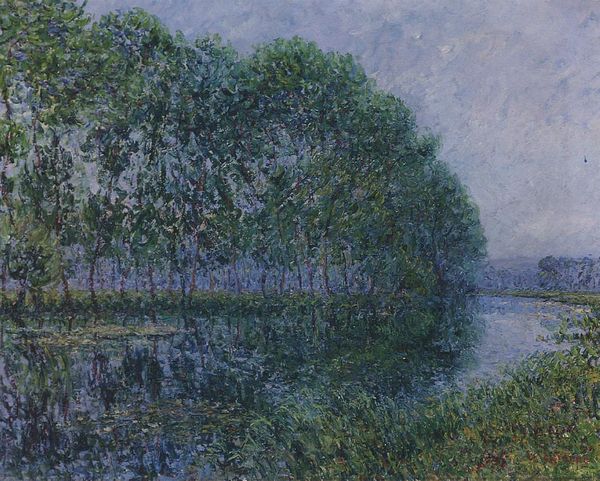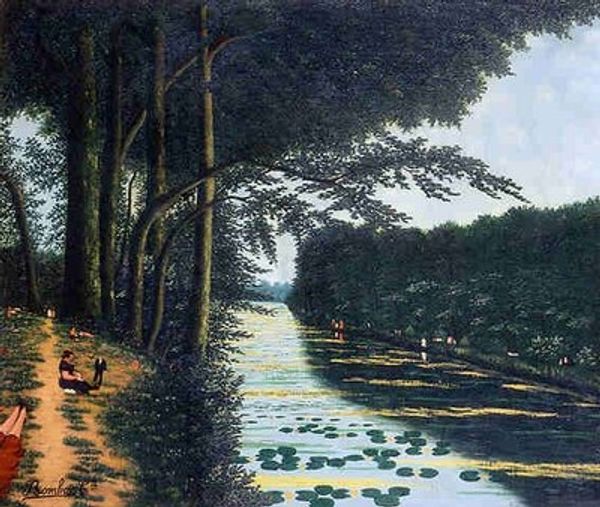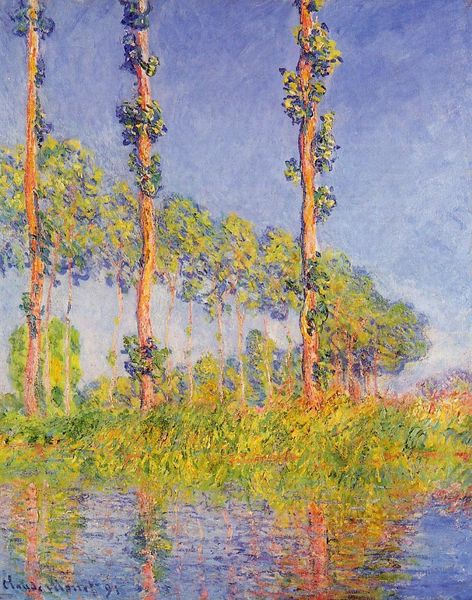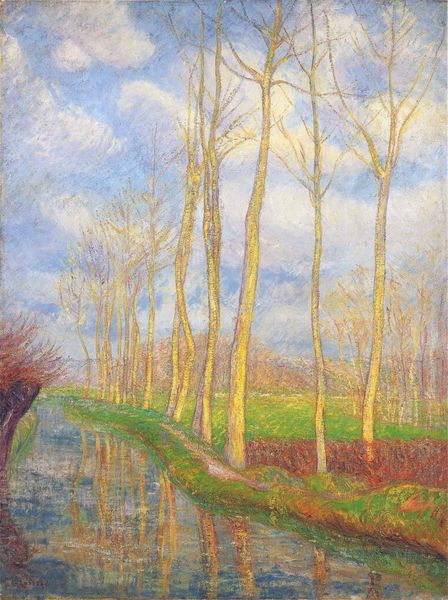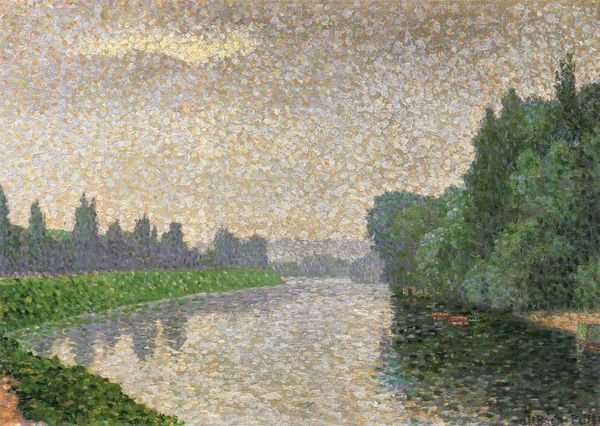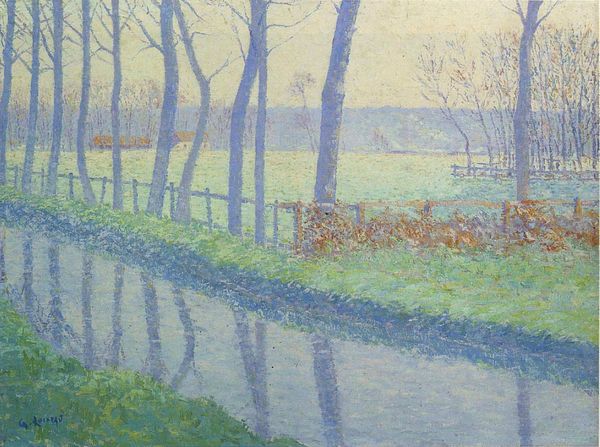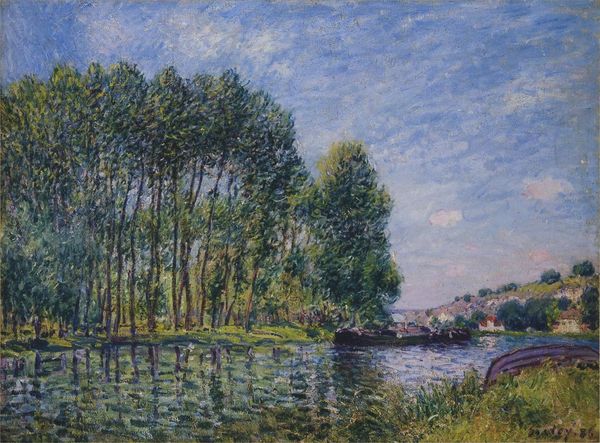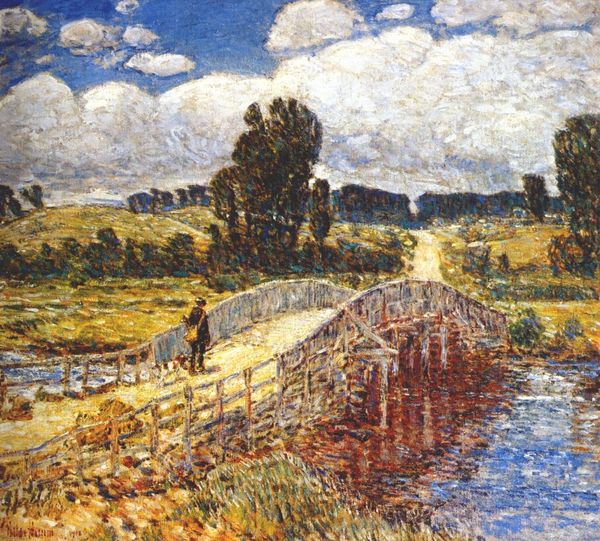
Dimensions: 152.4 x 203.2 cm
Copyright: Public domain
Editor: This is “Canal in Flanders” by Théo van Rysselberghe, painted in 1894 with oil paint. What a beautifully still image. I'm curious how you interpret the repetitive lines of trees. Curator: Those lines, they speak to something profound about how we organize our world. Consider the canal itself – a deliberate cut through the landscape. Rysselberghe is drawing attention to humanity’s influence on nature. Don't you find the strict repetition almost... unsettling? Editor: Unsettling, yes, maybe because it feels both natural and artificial. Like, the trees are natural elements, but they are lined up so precisely! It does create a kind of tension. Is that sense of imposed order common for that period? Curator: Absolutely. Late 19th-century art is filled with anxiety over industrialization, urbanization. Look how he uses pointillism to almost pixelate the scene. Each small dot contributes, but fragments the experience. Is he critiquing the coldness of modernity, maybe? Or highlighting its inherent beauty? Perhaps both... Think about it. Does it recall the collective social fabric where individual acts amass? Editor: So, the dots aren't just about light, they also act as little building blocks to reflect larger themes? Curator: Exactly! In every carefully positioned dab of colour, we find reflections of societal structures and cultural values of the artist's period, and our own! Editor: That gives me a lot to ponder! I never thought about the dots as having so much weight beyond just optical mixing. Curator: Precisely. Every stroke and every subject is laden with history.
Comments
No comments
Be the first to comment and join the conversation on the ultimate creative platform.
